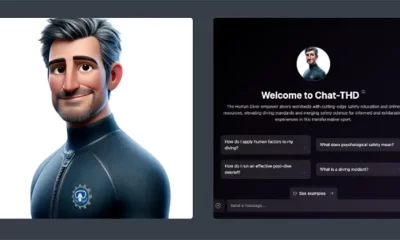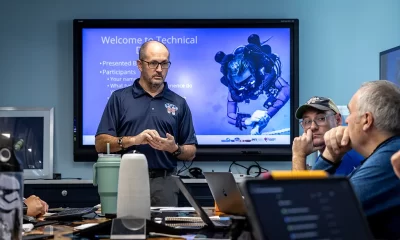Education
Preparing for GUE Tech 1
GUE Instructor Evaluator Guy Shockey explains how to prepare for GUE’s Tech 1 course. That’s right. It requires pre-class preparation.
By Guy Shockey. Photos by Andrea Peterson unless noted.
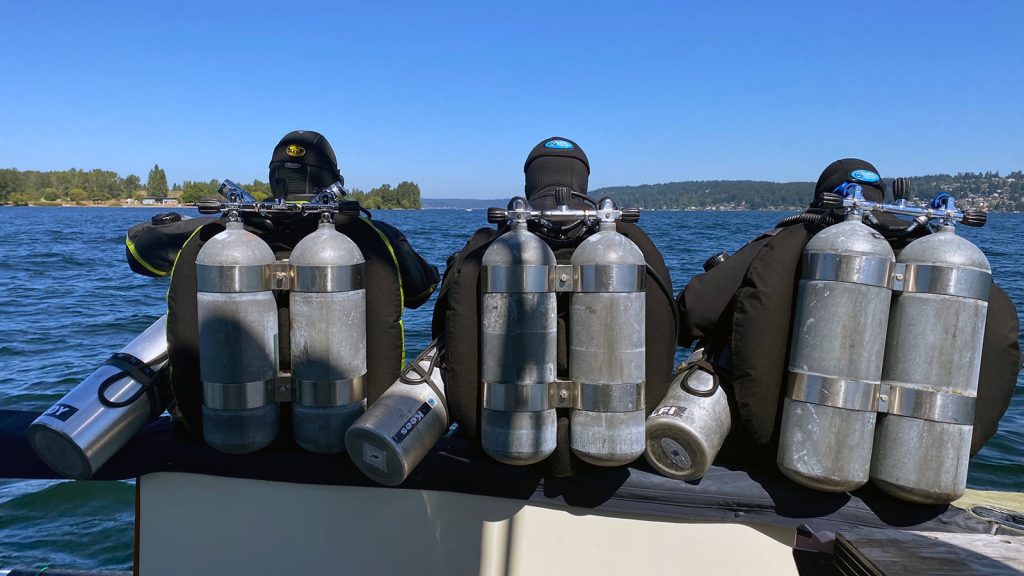
You completed your Global Underwater Explorers (GUE) Fundamentals class and achieved a Tech pass [The OK to begin GUE’s technical classes]. You started your GUE journey with the dream of diving some amazing wrecks or reefs in the 45 m/150 ft range, and now you’re turning your attention to the next stage of your journey. And, you’re starting to ask yourself the question that I am asked many times each year: “How do I prepare for GUE Tech 1?”
You might assume you have a reasonable chance of success if you enroll in a GUE Tech 1 class the day after you receive your GUE Fundamentals Tech pass; however, most Tech 1 candidates take some time to consolidate their previous gains before moving forward. It’s important to note that this training hiatus is not a requirement; moving from Fundamentals to Tech 1 isn’t like the transition between Tech 1 and CCR 1 (or Tech 2) where you are required to do a particular number of experience dives. At the same time, it’s not a bad idea to ensure you can consistently meet the buoyancy and trim requirements before choosing to do the GUE Tech 1 course. As a friend of mine said, “If Fundamentals is like sipping from a water fountain, then Tech 1 is drinking from a fire hose.” Tech 1 is not the place to find out your Fundamentals Tech-pass skills are inconsistent. The course is very busy, and if you fall behind on the first or second day, it’s unlikely you will be able to catch up.

Buoyancy and Trim
Tech 1 is all about midwater buoyancy and trim. You must be able to build a secure and non-moving platform at any depth you wish. Tech divers are creatures of the blue-water, and we must be at home wherever we are, regardless of where the bottom is. We seldom have anything but our teammates, our instruments, and a line to keep ourselves where we want to stay. Exemplary position—keeping in three dimensions—is a necessary part of “building our platform,” which is where we can communicate, manage issues, and make decisions. Think of this platform as the floor of an elevator where you and your teammates are lying on the floor facing each other. The elevator moves up and down, but the teammates do not move relative to each other. Your team moves up the line in formation and levels off at the new stop, but they don’t really change position relative to each other. This is the “platform” that we build to bring our team back up to the surface.
Propulsion
Part of your Tech 1 class is “skill refinement,” so you should expect to polish your existing kicks. Even if you just finished your Fundamentals Tech pass the day before, there is likely still room for improvement, and this is your chance to make “very good” even better! Expect the same for your maneuvering kicks—back kicking and helicopter turns. You will find that your back kick is your most useful physical skill in building your platform, and you will use it all the time. Having a weak or ineffectual back kick will make your job that much more difficult.
Valve Drills and S drills
Your first dive in your Tech 1 class will likely be very similar to your last dive in your Fundamentals class. In my classes, you will swim to 10 m/30 ft, you will deploy an SMB, then move up to 6 m/20 ft and do a round of valve drills and S drills while maintaining your platform on the line. You won’t move around and travel in the S drills: This is an exercise in buoyancy control and precision positioning while being task loaded. This is basically a “show me” dive so that I know where the baseline is on your fundamental skills. Based on your performance in this series, we can adjust our immediate timeline for moving ahead.
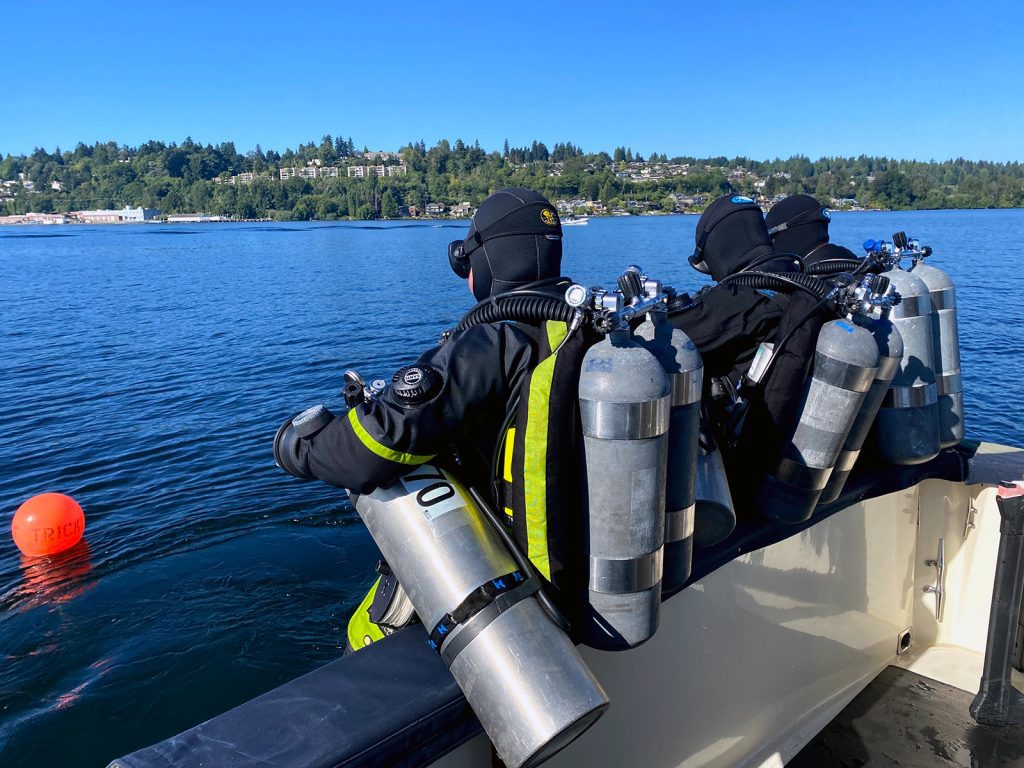
Situation Awareness
Throughout years of teaching technical diving, I’ve become more and more convinced that the single biggest strength a technical diver can have is strong situation awareness. This capacity bolsters everything else and can make or break a dive. You began learning how to develop this in your Fundamentals class when your instructor task loads you with maintaining team positioning while also swimming around a circuit and performing various skills and drills. It likely seemed difficult to juggle everything at the beginning, but the skill develops quickly, and in Tech 1 we make this a bigger priority.

Consider doing a bench press in a universal gym. You can apply all your strength to pushing the bar upwards, and if you do so unevenly, it doesn’t really matter: You are able to transfer all your strength into upward motion to make the bar move upward. Now do the same thing with dumbbells. You will find that you need to use many “helper” muscles to stabilize the dumbbell, and that you need to focus and manage these muscles in addition to the actual primary work of pressing the dumbbell up. This is what we do in Tech 1: We are going to create scenarios where you will do something like manage a valve failure but, while doing so, you will be required to use your “helper muscles” to monitor depth, time, current, team position, and your equipment. You can’t simply put your head down and follow a scripted sequence of events to resolve a valve failure. There is much more going on, and you will learn to increase your situation awareness capacity by stretching it and using it.
Skill Development
We’ve identified which skills to hone and what we will focus on in Tech 1. So, the question becomes, “How do I practice them?”
One of the best drills you can do is swim out to 10 m/30 ft of water, deploy an SMB, then move up to 6 m/20 ft and do a round of valve drills and S drills. This sounds simple enough but, as always, the devil is in the details; it isn’t so much “that” you do it, it’s “how” you do it.

You should expect to be held to the same standard as your Fundamentals Tech pass with respect to buoyancy and trim: a 1 m/3 ft buoyancy window and 20 degrees of trim. I have watched students practice and practice with the “this is good enough” mentality, but if it isn’t inside the standards listed above, then it isn’t good enough.
You need to be honest with yourself about your performance from these two perspectives because—rest assured—your instructor will be honest with you! This is probably the most common thing that I see: students practice a lot, but they don’t practice well. “Practice perfectly to perform perfectly.” If you don’t hold yourself to a high standard, and “good enough” is okay, then you will spend the first day or so in Tech 1 class doing remedial trim and buoyancy work. This can mean that you run out of time and don’t complete your class. Deploy your SMB, move up, clip a double ender at the 6 m/20 ft mark, and challenge yourself to keep that double ender right in front of you. Then get to the point where you remove the double ender.
Make a pact with your teammates to hold each other accountable for your performance. Agree to be totally honest with each other. Ask for—and expect—feedback from your teammates, and provide the same. If you do this, then you will breeze through your first dive on Tech 1, and you will have the foundation you need to move on to gas switches and valve failure resolution. You won’t be chasing the skills, and you will have to absorb only the new material. You won’t have to play catch-up, and your days will be challenging, but rewarding—and even fun!

Tech 1 is a very rewarding class to teach. Here, the students’ lights start to go on, and they understand the “why” for many of the things we did in Fundamentals. It often isn’t enough to just have something explained to you: Having a visceral experience that demonstrates the “why” and the “this is what can happen when you don’t do it” is much more persuasive, and this happens frequently in Tech 1. There is also a lot of new classroom material, so being “squared away” in your diving will free up some mental capacity to learn and understand the new theory.
Tech 1 can be one of the most rewarding classes you will ever take. You will come away with confidence, increased capacity and skill, and a whole new world of diving experiences will be open to you. Have fun, and enjoy the journey!
See Companion story: Becoming a Technical Diver: My Dive into GUE’s Tech 1 by Annika Andresen
Dive Deeper:
InDepth: Anatomy of a Fundamentals Class by Guy Shockey
InDepth: The Flexibility of Standard Operating Procedures by Guy Shockey
InDepth: Situational Awareness and Decision Making in Diving by Guy Shockey
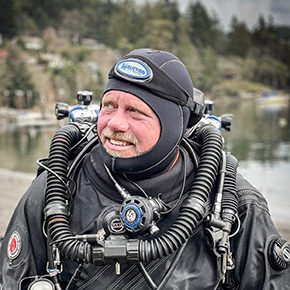
Guy Shockey is a GUE instructor and instructor trainer who is actively involved in mentoring the next generation of GUE divers. He started diving in 1982 in a cold mountain lake in Alberta, Canada. Since then, he has logged somewhere close to 8,000 dives in most of the oceans of the world. He is a passionate technical diver with a particular interest in deeper ocean wreck diving. He is a former military officer and professional hunter with both bachelor’s and master’s degrees in political science. He is also an entrepreneur with several successful startup companies to his credit.






















